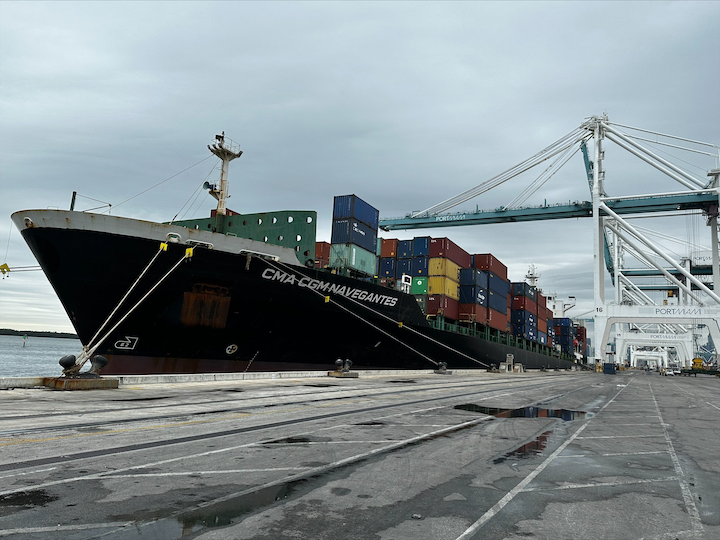South Florida Container Terminal (SFCT) located in the Port of Miami, welcomed the new CMA CGM Medgulf service. The weekly service offers Florida supply chains a first port of call to/from the West Med before proceeding into the U.S. Gulf and Mexico. The new route also offers an improved transit time from the Indian Subcontinent via Tanger, with 29 day transit to Miami.
The service started end of September 2022 and calls Tanger, Genoa, Valencia, Miami, Veracruz, Altamira, Houston and Tanger. Six vessels will operate the service including the CMA CGM NAVEGANTES that called SFCT on October 19th.

The order comes on the heels of a three-year modernization project that transformed the facility into a more sustainable operation with new, electric rubber tire gantry (RTG) cranes and added cargo storage space, using a densification model which allows 33% more usability in the container yard than before. This will increase capacity to approximately 300,000 lifts per year.
Hugh Healey, Head of SFCT said “Miami’s business center strength and Florida’s growing consumer market are creating excellent business opportunities for supply chain planners. We’re excited to welcome the new CMA CGM Medgulf service and also announce the next phase of our terminal improvement plan.”
New, touchless gate kiosks were added in 2020 to improve the trucker experience. Truckers enter and exit through weigh-in-motion scales with the help of ILA Clerks and Mechanics, processing their cargo information as they safely and efficiently move through the terminal.
The SFCT modernization project aligns with PortMiami’s master plan who is financing $38 million in port infrastructure improvements as well as applying for Federal Mega grant applications to achieve port decarbonization goals by electrifying yard handling equipment and yard trucks.
Miami is also the first port of call for Florida-bound cargo from Latin America and Asia. The port is the closest U.S. port to the Panama Canal and ideal for Latin America connections with close proximity to the Miami International Airport – for sea-air business and the Greater Miami Free Trade Zone. The Miami Customs District is one of the ten largest in the U.S., with total trade through its airports and seaports exceeding $100 billion annually.








